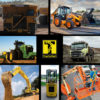Where are all the women in construction?
Attracting women into construction poses a significant problem. CN talks to some of the women covering a variety of roles in the industry about their own experiences and how contractors and clients can shape a more inclusive work environment.
Hidden away in the small print of a government report on employment in 2016, you’ll find a note that tells you everything you need to know about women in construction.
In April-June 2016, there were so few female workers in the industry that for many of the individual building trades the government was unable to even provide an estimate as to how many there were.
Despite the lack of available data, from boardroom to building site it is estimated that women account for around 12.8 per cent of the industry’s workforce, according to the ONS.
While the small percentage of women working in construction reflects poorly on the industry, it is perhaps of greater concern when considered in the context of the need to recruit hundreds of thousands of new workers in the next five years.
But the industry is struggling to attract women into the sector. According to research released this month by Keepmoat, only 13 per cent of 1,000 women it surveyed aged 16-25 would consider a career in the industry. Almost half (46 per cent) of respondents said the main reason for the industry’s lack of appeal was perceived barriers to career progression.
With a huge gender disparity in construction at a time when the industry is crying out for new recruits, what are companies doing to attract a more gender-balanced workforce?
Lack of impartial information
According to research conducted by Redrow and released this week, only 29 per cent of women in a survey of 1,000 people aged 15-21 had been given advice on a career in construction, compared with 40 per cent of men.
Jessica Tabibi, a quantity surveyor for Bristol-based construction company H Sweet and Sons, discovered first hand the lack of information young women are given on the opportunities the construction industry can offer them.
“Girls are completely blind to the roles out there in the industry.”
Bridget Bartlett, CIOB
While researching why there is a lack of women in the construction industry for her postgraduate degree in quantity surveying, Ms Tabibi says the industry was not promoted to the girls she surveyed across several secondary schools.
“The industry is offered as a career choice to boys but thought as traditionally not for girls,” she explains. “People think the industry has a macho culture and they think women can’t progress within it.”
She says the girls she surveyed showed little interest in the industry: “A lot of the girls said construction was boring. When I asked them why, they said they didn’t know much about it and that they wouldn’t be good at it. Some of the girls wouldn’t even fill out the survey they were that disinterested in the industry.”
It is clear the image of construction is damaging the industry’s chances of attracting women into the profession. But whose responsibility is it to wave the flag for construction – client, contractor or education providers?
“It’s down to everyone to tackle the issue,” says CIOB deputy chief executive Bridget Bartlett, but schools are not offering adequate careers advice to young girls to promote construction and engineering as a viable career choice.
“Girls are completely blind to the roles out there in the industry,” she explains. “They don’t know the range of jobs the industry can offer, usually when you say ‘construction’ people will think of hard hats, high-vis jackets and digging holes.”
How do you change this?
Ms Bartlett suggests the industry needs to increase its profile through the use of female role models. “A lot of women in our industry are STEM ambassadors going into schools talking about the industry,” she says. “That’s really helpful, as this brings the industry alive. It encourages girls to keep learning those subjects going onto A-levels, which will help increase the number of girls going into university to study these subjects at a higher level.”
The gender pay gap
Although, arguably, the perception of the construction industry does not truly reflect the reality, it is undeniable that disparate pay between men and women presents a real barrier to both attracting and retaining the industry’s female workforce.
According to the ONS, the gender pay gap between men and women working in construction stands at 45.4 per cent, with women paid an average hourly rate of £8.04, compared with £14.74 for men.
“Practically every day I experience some kind of loose sexism”
Megan Robinson, Barratt Homes
“Right the way up the scale, it would appear that women are being underpaid,” Ms Bartlett says – and this gender pay gap begins right at the start of women’s careers. “At the stage of recruitment, women will usually take the salary they are offered,” she says. “However, men are more likely to negotiate a higher starting salary.
“This exacerbates as you go up the scale and becomes significant when you get to mid-career stage. Unless you negotiate a decent starting salary, you’re going to lag behind.”
The leaky pipeline
Although still in the minority, the number of women being directly employed in construction appears to be on the rise.
In 2015, the industry saw a 20-year high in the number of women it employed, with the number entering construction growing 6.6 per cent year on year according to ONS data.
There is clearly a pool of talented young women entering construction – but keeping hold of this workforce appears to be an issue. Women seem to be dropping through the cracks of the career pipeline.
“Retention of our female workforce is the biggest issue there is,” Ms Bartlett says. “The most significant reasons why you haven’t got enough women in the senior side of the industry is the barriers they face re-entering the workplace after having children.”
But if the industry is to deliver the billions of essential infrastructure projects the country has lined up, it is essential to keep this workforce in place and attract them back into the industry after a career break – something the UK’s biggest contractors like Balfour Beatty, Carillion and Skanska have realised.
Skanska diversity and social programme manager Israil Bryan identifies a lack of flexibility in employment as a particular problem preventing women from re-entering the industry. “The nature of what we do is site-based and these hours are very long,” she explains. “Even working in a head office function means you have to juggle childcare, which is a massive challenge.”
To address this issue, the company piloted a scheme to attract talented individuals into the industry after an extended career break. Although targeted at professional men and women, the programme has been successful in getting women back into work after having children.
“A lot of the girls I surveyed while I was researching for my dissertation said construction was boring… Some wouldn’t even fill out the survey they were that disinterested”
Jessica Tabibi, H Sweet and Sons
“In my previous role as a project manager, nearly all of my female colleagues left to have families and didn’t return,” says Tania Baguley, who took part in the programme and now works as a change manager for the contractor.
She previously worked as a consultant for Gardiner & Theobald but was attracted by the flexibility of Skanska’s programme. “I could negotiate working a three-day week and spend time with my kids while having a good career in the industry I’m trained in – not just having to go down to an arbitrary administrative role.”
Offering flexible working can not only attract women from within the built environment – but can entice women in from different industries, too.
Having worked in the investment banking sector as a senior analyst for Goldman Sachs, Hayley Brockway took a 10-year career break to bring up her three children and care for her mother, who became terminally ill.
She was struggling to re-enter the financial sector and was attracted to the flexibility of Skanksa’s return to work programme. “It’s a big stigma having a big gap on your CV,” Ms Brockway says. “I wasn’t getting far with banking and I thought construction would be a good alternative in terms of the transferable skills I had.
“My confidence really grew through the career coaching I had through the programme and it really is all about flexibility. It’s important to have different working patterns in place that suit everybody.”
Everyday sexism
“Practically every day I experience some kind of loose sexism” says Barratt Homes technical co-ordinator and co-founder of networking organisation Built by Both, Megan Robinson.
As a recent architectural and engineering graduate relatively new to the industry, Ms Robinson said she was instantly hit by the divide between men and women and finds traditional attitudes towards women on site frustrating.
“A lot of the time in meetings it’s hard to get across to subcontractors that I know what I’m talking about,” she explains. “They’ll directly ask my manager or they’ll ask one of the males on the team a question that really they should be asking me about.”
“The most significant reasons why you haven’t got enough women in the senior side of the industry is the barriers they face re-entering the workplace after having children”
Bridget Bartlett, CIOB
It seems that extreme gender discrimination is no longer a widespread issue, but has been replaced with benevolent sexism: “On site, I get treated like a daughter” Ms Robinson says. “People will apologise to me for their language and won’t want to upset you – which means they don’t come to you with their problems.”
Ms Robinson argues that we need more women in the industry in order for attitudes to improve. “The construction industry isn’t sexist – there just aren’t enough women in it.
“Until we show women what you can achieve in this industry and get in more female role models, we’re going to have to work extra hard to get them into the industry.
“I love construction, I love everything about the built environment and in our industry there are so many opportunities that women don’t realise they can do.”
What’s the solution?
Although there has been progress in attracting women to construction in all sorts of different roles, there remains a massive gender divide that is hampering efforts to recruit more younger women to the industry.
With contractors working hard to offer women a route back into work after a career break and schemes like Considerate Constructors promoting the image of construction to young girls in schools, work is being done to offer women work. But keeping them in construction remains a difficulty.
The industry can do more, according to Skanska’s Ms Bryan: “As a sector we still have a way to go, and as a company, we still have a way to go to make sure that we’re attracting people across the board.”
For as long as government research on the number of women in construction and building trades are “too small for a reliable estimate”, the industry will need to fight to address the gender imbalance on site and in offices across the UK.
Meet the women building our future

Damilola Ola is an undergrad studying construction management at Coventry University – the only female on her course
“I had literally no information on the opportunities available in construction. Before my course, I thought construction was working on site and building things. People think you’ll be driving the big trucks, you’ll be muddy and you’ll get dirty by getting hands-on while on site.
“But listening to my lecturers, I’ve realised that it’s not just about working on site. There are other opportunities behind the scenes that no one has heard about or seen.
“I didn’t have enough information on the course, I just went blindly into it. If I was given more information, it would have influenced my decision to go into this even more.”

Katie Kelleher is a crane operator at Crossrail
“I had never considered that I could operate a crane – it never crossed my mind. I had never even thought that women operated cranes – I never saw a female crane operator and I never thought about it as a career option. No one at school had ever said learning a trade or a skill was an option.
“To start with, when I went out on site, I was just ‘that woman who operates a crane’. On site people still stare. I think it’s because there aren’t that many women that operate plant on site or cranes.
“How can you make a more inclusive environment? It’s about an equal playing field and making women feel included. I feel part of the crane team here – we’re all friends and we go for a drink on a Friday. It’s about treating women as equals – we’re all the same, we enjoy the same things, there’s nothing that different.”

Joanna Bateman is graduate engineer at Mouchel and seven months pregnant
“I told my work early on that I was expecting and very soon after the morning sickness kicked in, which lasted for 26 weeks. I was being sick several times a day and it was very difficult. But work were very flexible and allowed me to come in slightly later or leave slightly earlier.
“It’s a taboo to say you want to have a baby as part of your five year plan. If we’re going to deliver the infrastructure that the country needs, such as creating safe spaces for wheelchair and pushchair access, we need an input from different parts of society. We need that insight on how things could improve.
“I thought being pregnant was a great opportunity as a STEM ambassador going into schools to promote the industry not only as a woman to show what you can do not only as a female engineer, but being a pregnant engineer.”

Brenda Jones is technical director in project management services at WSP and Women in Property’s national chairman
“I noticed working as a project manager for three or four years that women were getting stuck at getting further than senior managers.
“It’s the difference between being a senior engineer/project manager/architect to taking responsibility for a team, a budget or recruitment. Part of it is lack of self-confidence and female role models in senior technical positions.
“I took nine months off for maternity leave and I felt under pressure. My contracts manager on site was ringing me up on a Wednesday giving me a list of things to do because I didn’t work on Fridays. I felt a certain criticism from him that he felt it was inconvenient I wasn’t working five days.
“We have to make agile working more available as it is imperative not to lose people.”
source: https://www.constructionnews.co.uk/best-practice/skills/where-are-all-the-women-in-construction/10017903.article













